Pteridophytes | Biology Class 11 - NEET PDF Download
| Table of contents |

|
| What are Pteridophytes? |

|
| Characteristics of Pteridophytes |

|
| Reproduction and Fertlisation |

|
| Classification of Pteridophytes |

|
| Frequently Asked Questions (FAQs) on Pteridophytes |

|
What are Pteridophytes?
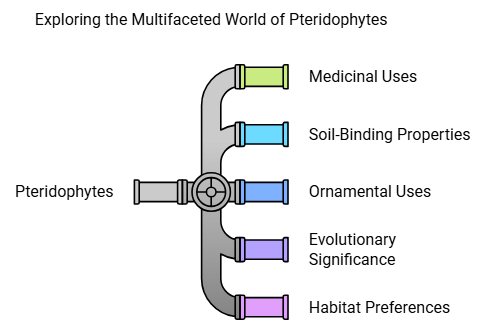
- Pteridophytes include plants like horsetails and ferns.
- They are used for medicinal purposes, as soil-binders, and are often grown for ornamental purposes.
- Evolutionarily, they are the first terrestrial plants with vascular tissues, specifically xylem and phloem.
- Pteridophytes are typically found in cool, damp, and shady environments, although some can thrive in sandy soil conditions.
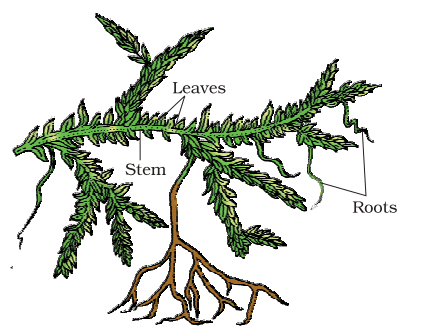 Selaginella
Selaginella
Characteristics of Pteridophytes
- Unlike bryophytes, where the dominant phase is the gametophytic plant body, pteridophytes have a dominant sporophyte phase.
- The sporophyte is differentiated into true roots, stems, and leaves, all of which have well-differentiated vascular tissues.
- Leaves in pteridophytes can be small (microphylls)(e.g., Selaginella) or large (macrophylls)(e.g., ferns).
- The sporophyte bears sporangia, which are subtended by leaf-like structures called sporophylls.
- Sporophylls can sometimes form distinct structures called strobili or cones, as seen in Selaginella and Equisetum.
- Sporangia produce spores through meiosis in spore mother cells.
- The spores germinate to form small, multicellular, free-living, mostly photosynthetic gametophytes called prothallus.
- These gametophytes are also photosynthetic and require cool, damp, shady places to grow.
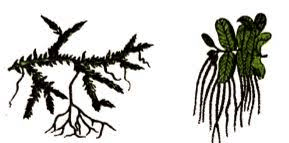
Reproduction and Fertlisation
- Gametophytes bear male and female sex organs called antheridia and archegonia, respectively.
- Water is necessary for the transfer of antherozoids (male gametes) from the antheridia to the mouth of the archegonium.
- The fusion of the male gamete with the egg in the archegonium forms a zygote.
- The zygote then develops into a multicellular, well-differentiated sporophyte, which is the dominant phase of pteridophytes.
- Most pteridophytes are homosporous, producing spores of similar kinds.
- Plants like Selaginella and Salvinia are heterosporous, producing two types of spores: macro (large) and micro (small) spores.
- The megaspores and microspores give rise to female and male gametophytes, respectively.
- In some cases, female gametophytes are retained on the parent sporophytes for varying periods, and the development of zygotes into young embryos occurs within the female gametophytes.
- This process is a precursor to the seed habit, which is considered an important step in evolution.
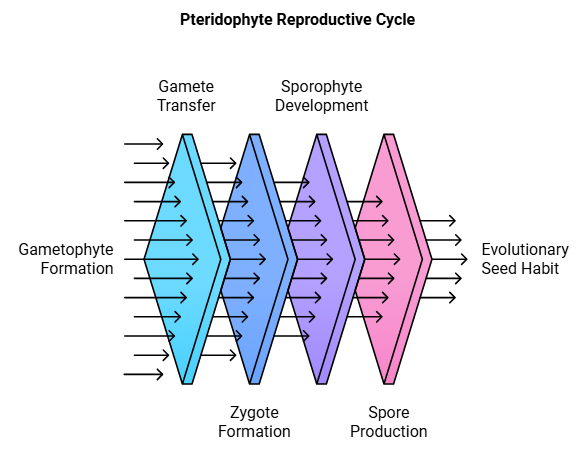
Classification of Pteridophytes
Pteridophytes are classified into four classes:
- Psilopsida: e.g., Psilotum
- Lycopsida: e.g., Selaginella, Lycopodium
- Sphenopsida: e.g., Equisetum
- Pteropsida: e.g., Dryopteris, Pteris, Adiantum
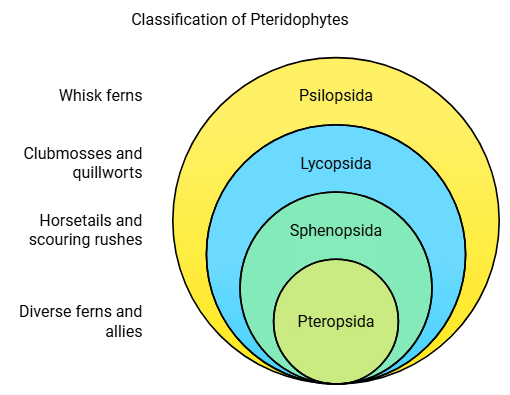
Frequently Asked Questions (FAQs) on Pteridophytes
Q: What are Pteridophytes?
Ans: Pteridophytes are a group of vascular plants that produce spores for reproduction. They are commonly known as ferns, horsetails, and club mosses.
Q: How do Pteridophytes reproduce?
Ans: Pteridophytes reproduce by spores that are produced in sporangia. These spores germinate and grow into a haploid gametophyte, which produces male and female gametes. The fertilisation of the gametes produces a diploid sporophyte, which grows into the mature plant.
Q: What is the life cycle of Pteridophytes?
Ans: The life cycle of Pteridophytes involves alternation of generations between the sporophyte and the gametophyte. The sporophyte is the dominant phase of the life cycle and produces spores through meiosis. The spores grow into the haploid gametophyte, which produces male and female gametes. Fertilisation of the gametes produces a diploid zygote, which grows into a new sporophyte.
Q: What is the economic importance of Pteridophytes?
Ans: Pteridophytes have several economic uses. They are used as food, fodder, and ornamental plants. They also have medicinal properties and are used in the production of various industrial products such as paper, dyes, and perfumes.
Q: What are the major characteristics of Pteridophytes?
Ans: The major characteristics of Pteridophytes include vascular tissue, roots, stems, and leaves. They also have spores for reproduction and alternation of generations between the sporophyte and gametophyte phases.
|
150 videos|398 docs|136 tests
|
FAQs on Pteridophytes - Biology Class 11 - NEET
| 1. What are Pteridophytes and how do they differ from other plants? |  |
| 2. What are the main characteristics of Pteridophytes? |  |
| 3. How do Pteridophytes reproduce and what is the process of fertilization? |  |
| 4. What are the major classifications of Pteridophytes? |  |
| 5. Why are Pteridophytes important in ecosystems? |  |





















